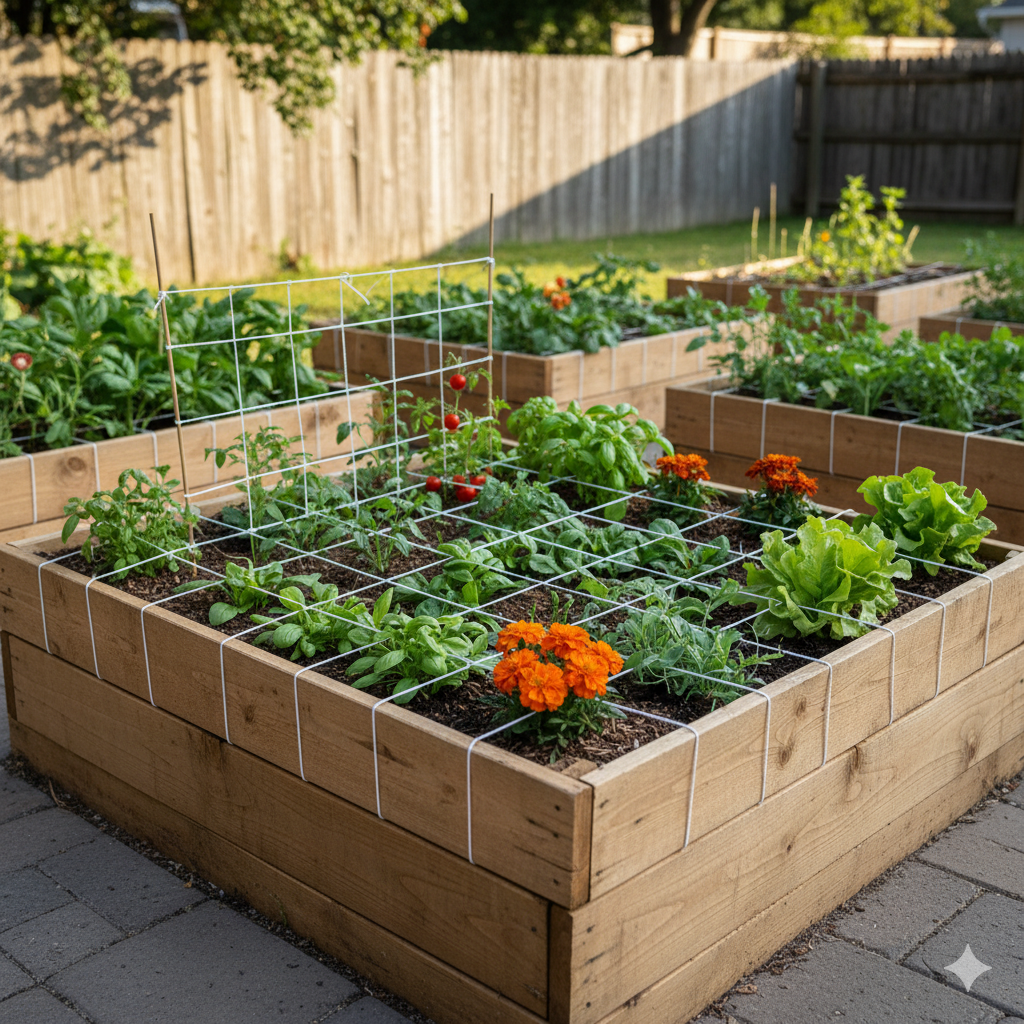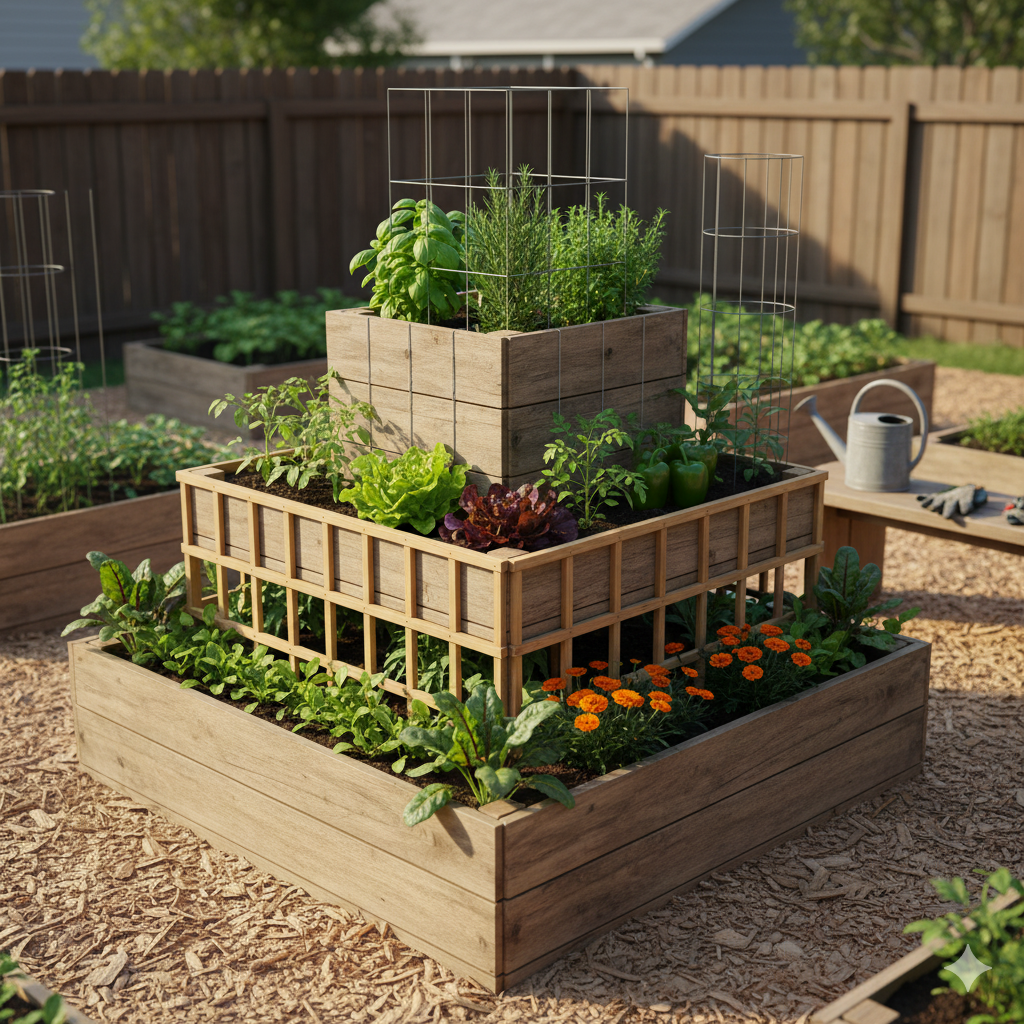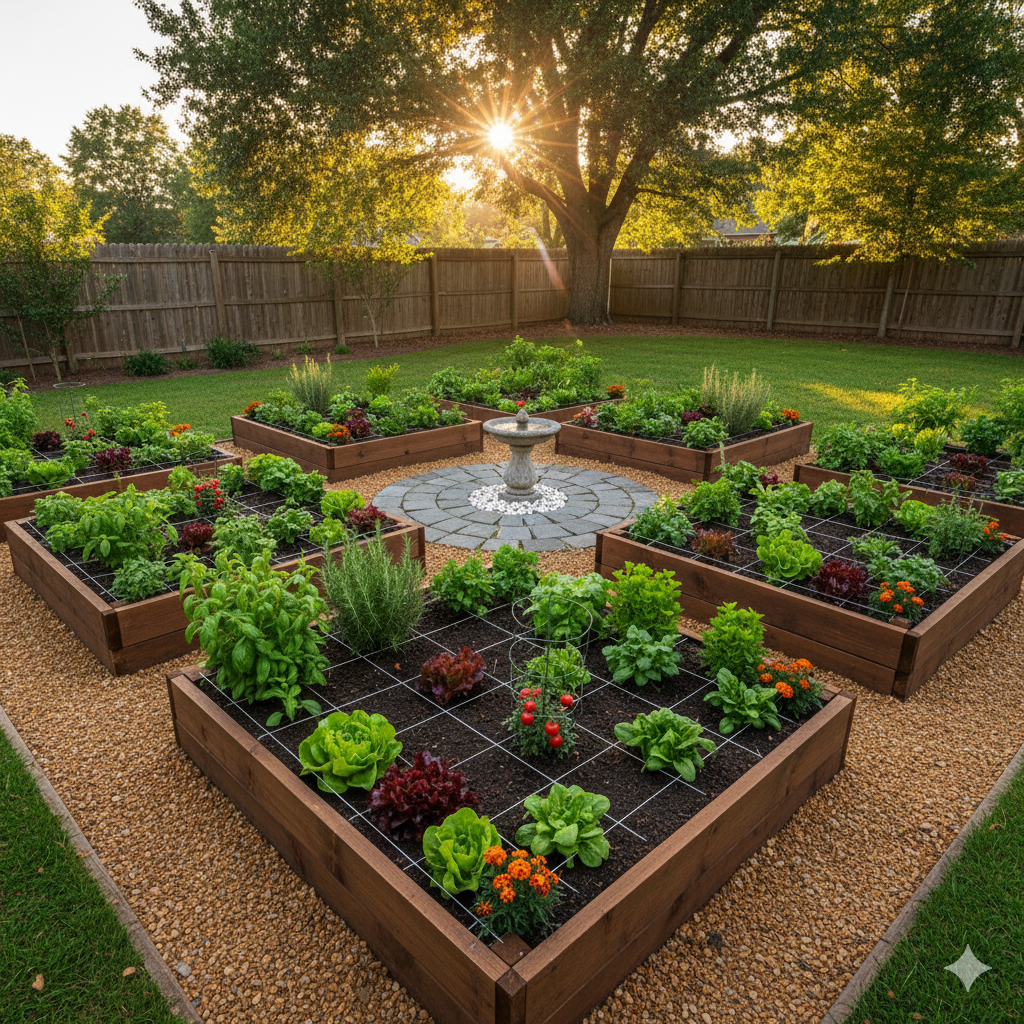Example A — 2×6 ft (12 squares): “Salad + Salsa” Bed
Goal: nightly salads + fresh salsa for a household of 2–3.
- North long side (trellis): 3 squares cucumbers (2 plants/sq) + 3 squares indeterminate tomatoes (1/sq, prune to 1–2 leaders).
- Center row: 2 squares basil (4/sq), 2 squares bush beans (9/sq), 2 squares beets (9/sq).
- South row: 4 squares lettuce heads (4/sq), 1 square scallions (16/sq), 1 square marigolds (4/sq).
Yield: 2–3 cucumbers/week in peak; 2–4 salad heads/week with succession; a colander of beans every 3–4 days; continuous basil.



